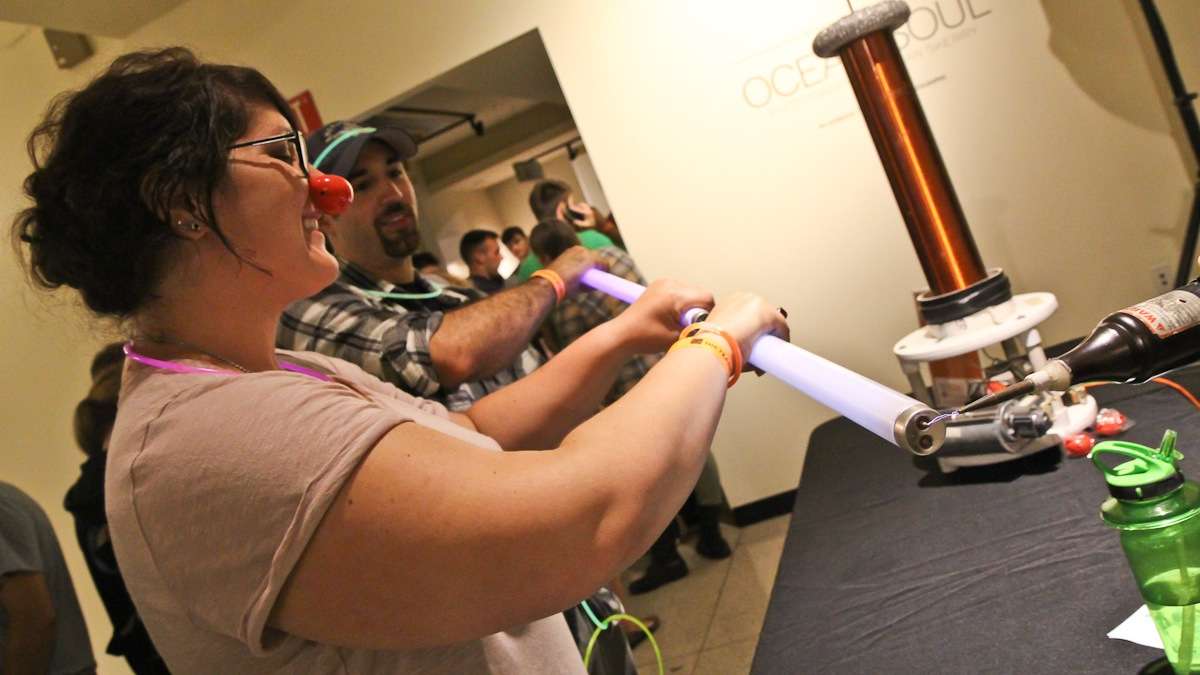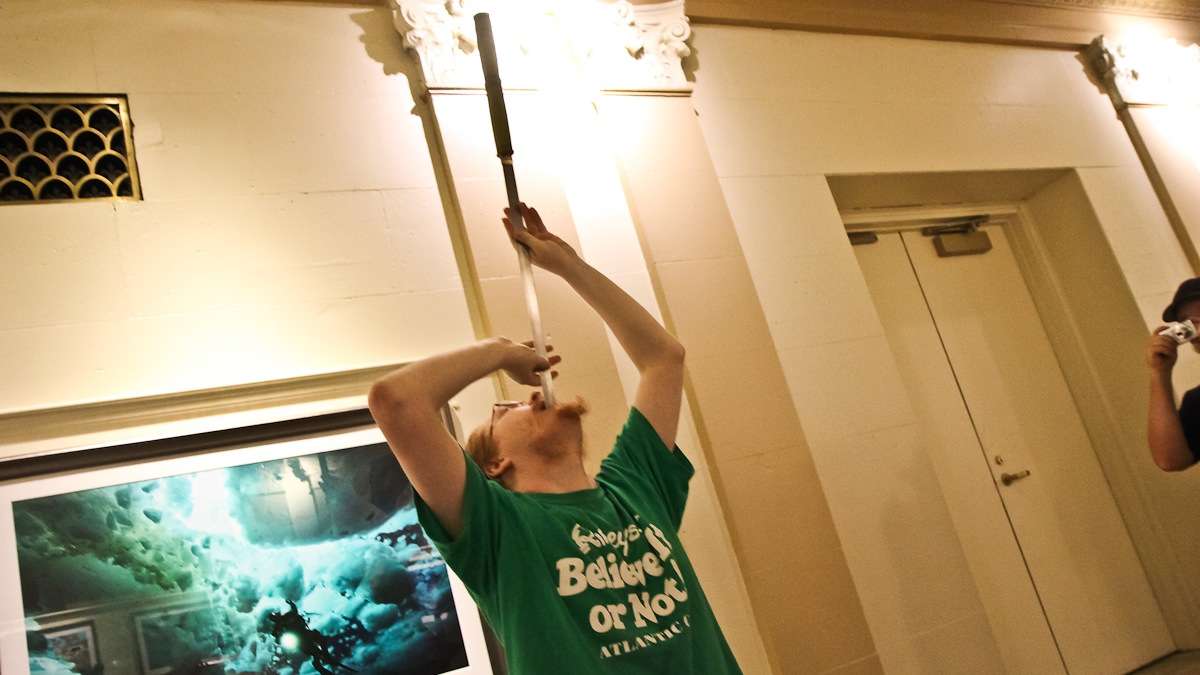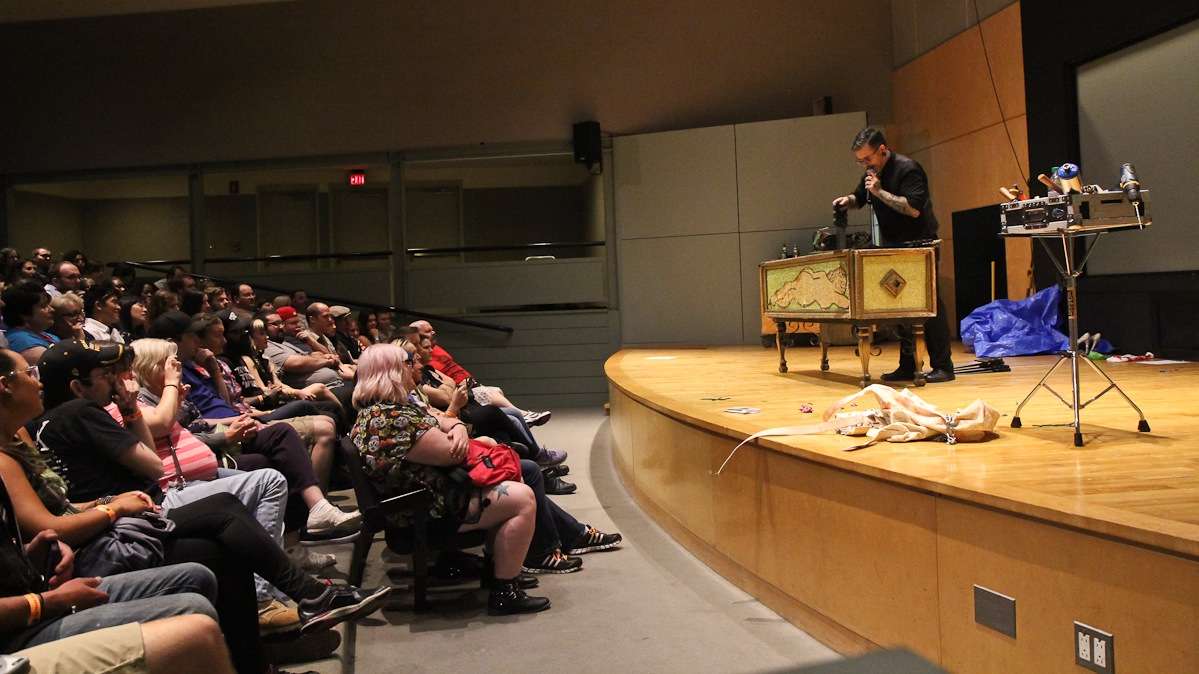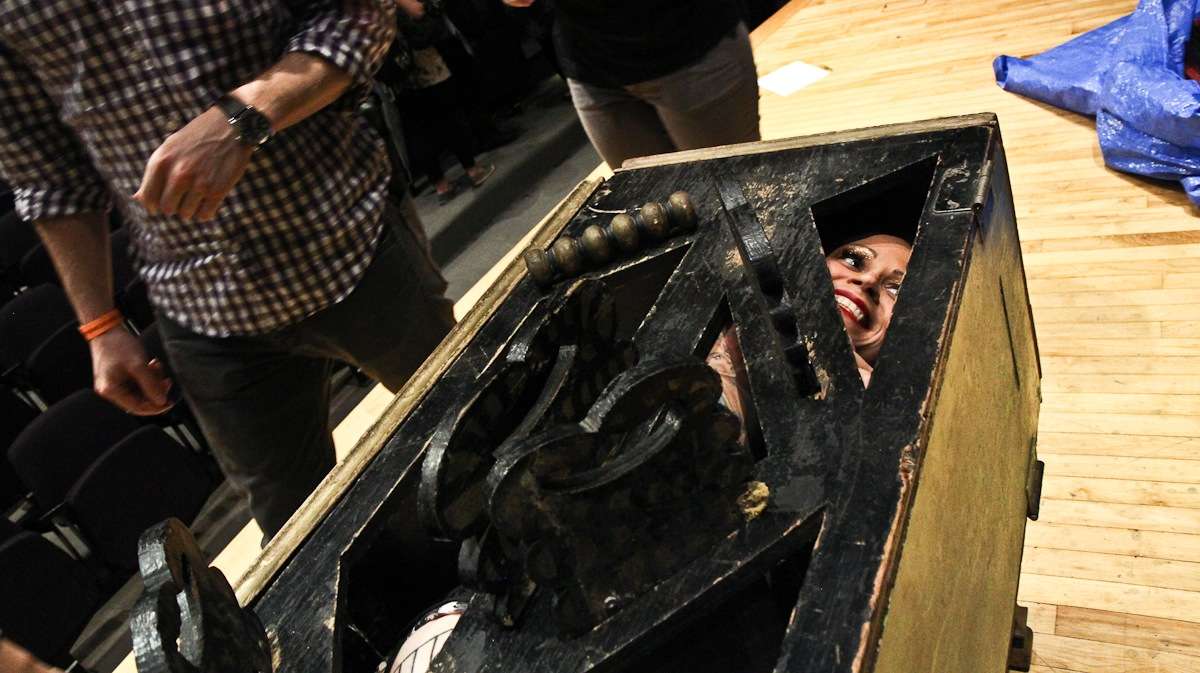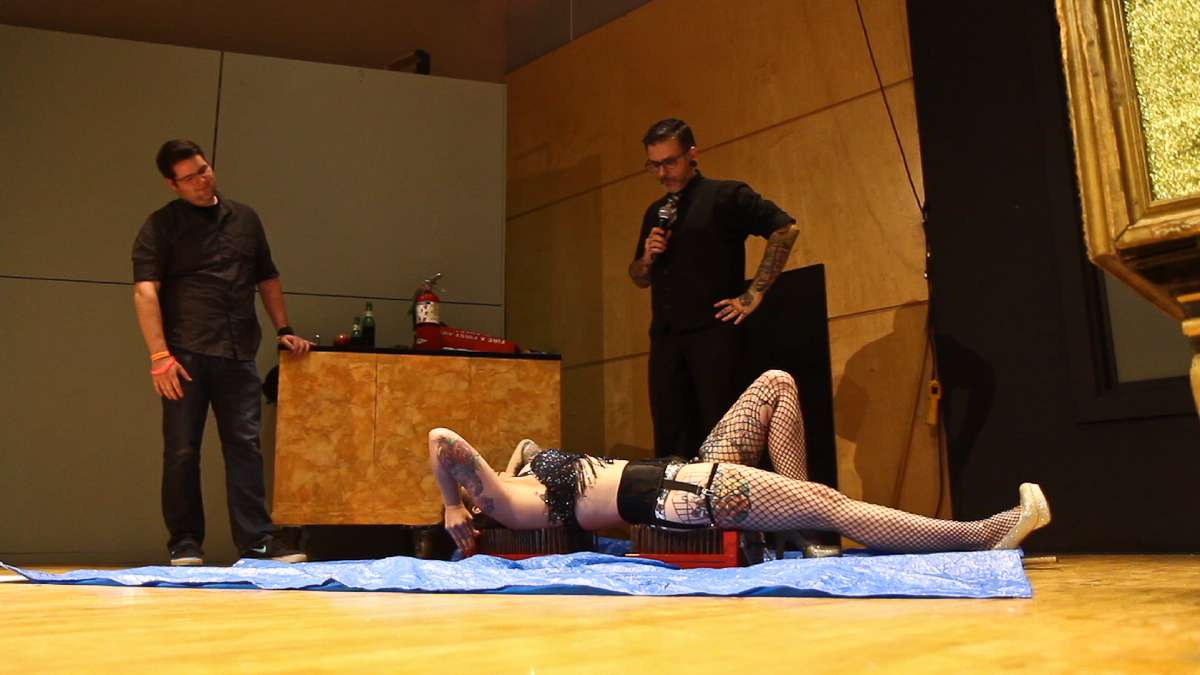Swords, whips and cotton candy: The science of the circus
ListenAn unveiling of the science behind the circus blade box, a human blockhead, sword swallowing and more.
The circus is full of marvels of human strength and agility.
Contortionists. Acrobatics. Sword swallowing.
Stunts to make one’s jaw drop and stomach turn.
A traveling exhibit on the history and science of the circus is on display at Philadelphia’s Franklin Institute through the end of the month. But last Tuesday, displays came to life as hundreds turned out for real demos by the pros, partnered with scientists taking a jab at ‘the how’ of some of those magnificent feats.
The human blockhead
Danny Borneo of the Olde City Side Show says he’s best known as the human blockhead.
“I shove sharp implements directly into the center of my skull,” he tells The Pulse, quite matter-of-fact-ly.
Standing before a packed theater at the Franklin, Borneo wastes no time propping a six inch, stainless steel roofing nail up his nose.
The crowd gasps.
“I would say it’s not comfortable, but not painful,” Borneo later tells The Pulse.
He pauses.
“It’s tolerable. Let’s go with tolerable.”
“I want to know what was missing in his head for the nail to go that deep!” says Jerome McLeod, who’d been sitting in the front row, laughing and at times cringing at Borneo’s stunt.
Know your anatomy
Actually, it’s not as bad as you think, explains Evan Goldman, an anatomy professor at Cooper Medical School of Rowan University.
“The problem is if you don’t aim it in the right direction, there are two areas where you can really cause damage,” he explains at a demo outside the theater. “Number one, you have these things in your nasal passages called conchae. Or in animals they’re often called terbinates.”
Goldman uses his own props to break down the stunt. He picks up a skull, and points inside the nasal passage to some barely visible, extremely delicate curved slivers of bone protruding from both sides toward the middle. They’re normally lined with a mucus membrane.
“You can just barely see them when you look straight into a person’s nose,” he says. “So if you hit them you’re going to be in a lot of pain with blood gushing all over the place. That’s the structure that gets swollen when you have a stuffy nose.”
Goldman then picks up a metal probe — imagine it’s Borneo’s nail — and demonstrates on the skull how, very carefully, it can slide through the nasal passage a few inches back. He lifts up the skull to show that the nail is essentially in the back of the mouth. That’s because the back of the nasal cavity and the back of the oral cavity of the mouth are connected in an area called the pharynx.
Go too far beyond that, and you could hit another membrane, meaning more bleeding. Or worse:
“You’re very, very close to the vertebral column. So if you jam a nail into your nose, you could hit the vertebrae, and those vertebrae are thin there so you could jam it into your spinal chord.”
Yikes. Not good. So how does Borneo do it?
“He knows exactly how far to go,” says Goldman. “And he’s a good showman.”
Back inside the theatre, nail still nestled in his nose, Borneo picks up another prop. It’s a drill.
More audience gasping.
He puts it to the nail.
“Folks there’s a problem,” he says, after a couple seconds. “I hit a stud.”
Don’t be tricked: sideshows are about science
Borneo and his stage partner, Reggie Bugmuncher proceed to use props like straight jackets and eye hooks to show off the crazy stunts a human body, with extensive practice and training, can withstand.
The two conclude the evening with one final act: the famed 11 blade box.
“It’s an exhibit of contortionism, if you will,” Borneo says.
Bugmuncher lies down inside it. It’s a narrow box, kind of like a coffin. Borneo proceeds to drop wide, stainless steel blades through slots that cut straight to the bottom. From the crowd’s view, it’s hard to imagine Bugmuncher is still in one piece. But alas, Borneo asks her to raise her hand if she’s still there.
She does.
Borneo goes on to explain that while many watching may think it’s a magic trick, it’s not. The side show, he says, is not an act of illusions. It’s about using science and a keen awareness of human anatomy to perform amazing physical stunts.
To prove this point, once all the blades are in the box, he opens the lid. He then invites the audience on stage, single file, to look inside and see just how Bugmuncher has maneuvered her body to avoid the blades.
Sure enough, as The Pulse peaks in, she’s in there wrapped around the blades.
“It’s snug,” she says.
But how?
“The quote-on-quote secret of the majority of side show, is science!” she continues. “So for a bunch of carnies, there’s a lot of really smart things happening involved in all of this. A lot of it is just the placement of my body and my ability to contort myself around where he’s putting the blades.”
So does it take a lot of practice?
“It does, but it’s like riding a bike. You never forget.”
The Philadelphia Franklin Institute exhibit is open until Sept. 1.
WHYY is your source for fact-based, in-depth journalism and information. As a nonprofit organization, we rely on financial support from readers like you. Please give today.





